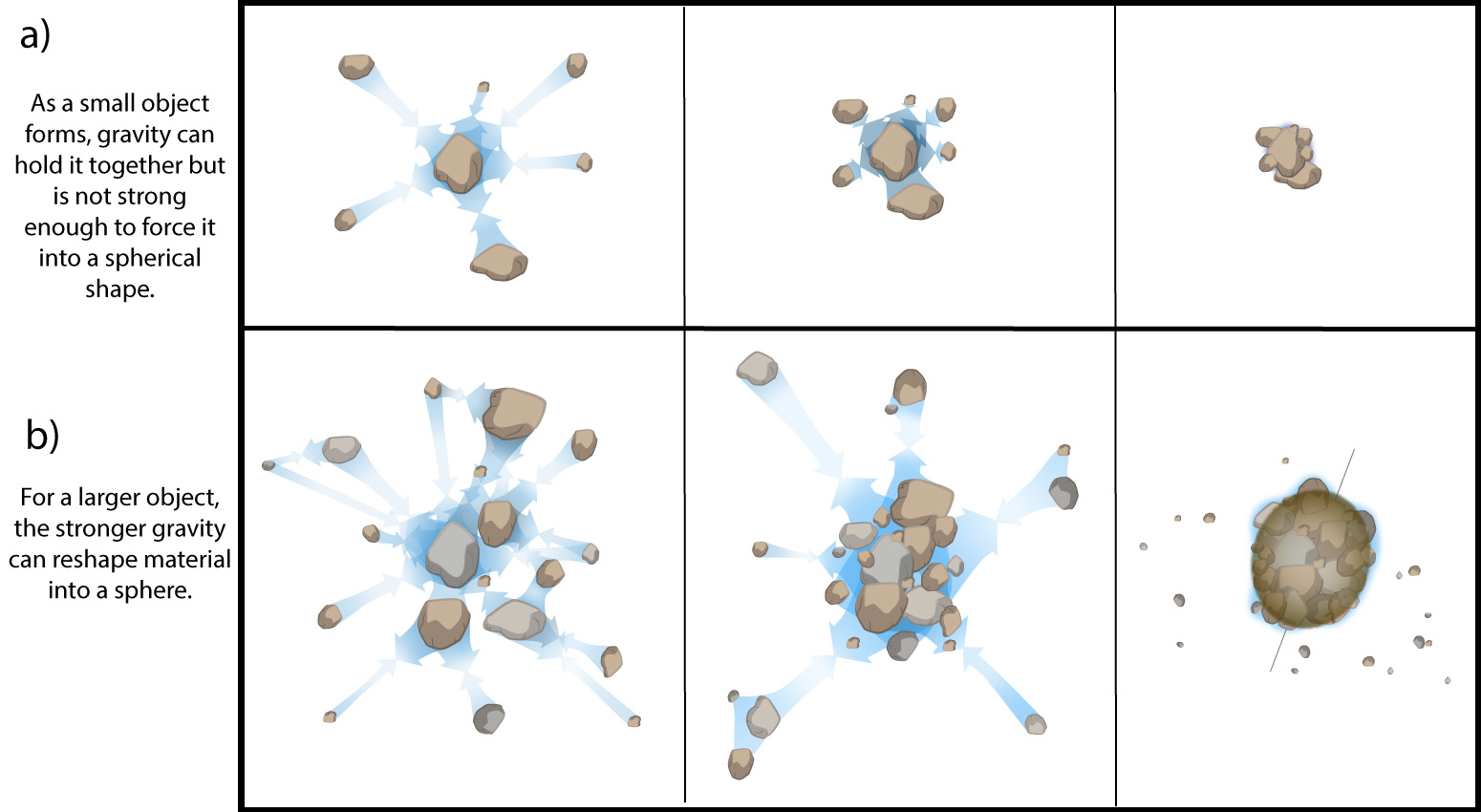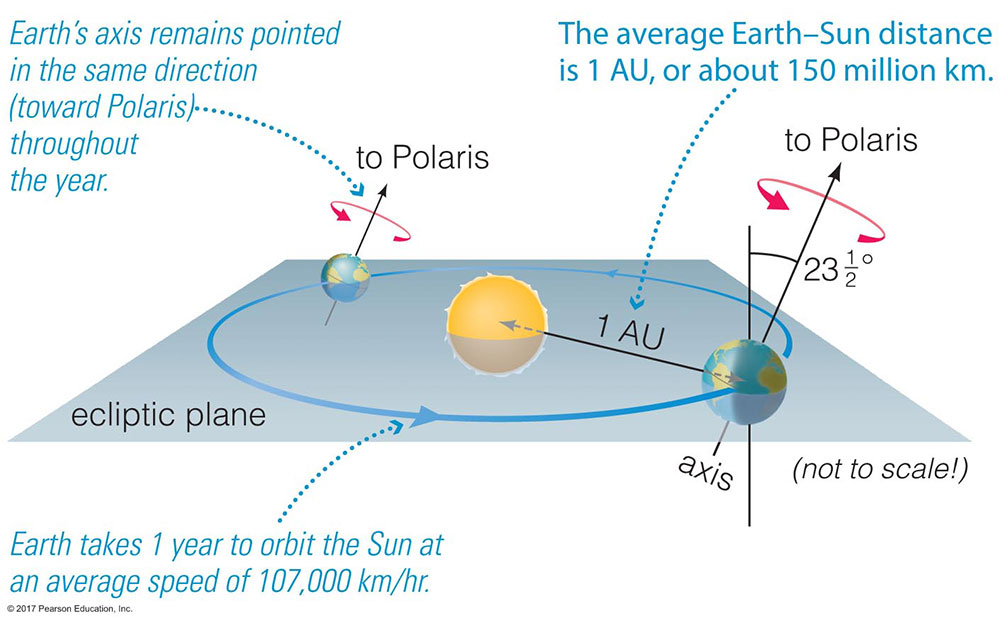Why are impact craters round?
You know that impact craters form when an asteroid or comet — which are “leftovers” from the time of planetary formation — slams into a world’s surface. You also know that most asteroids and comets are small enough that they are not round (see Figure 3.32). Why, then, are impact craters almost always circular?
The answer comes from the tremendous energy released when an impact occurs. Recall that the planets orbit the Sun at pretty high speeds; for example, Earth orbits the Sun at a speed of more than 100,000 kilometers per hour (see Figure 1.28). Asteroids and comets orbit at similarly high speeds. This means that in those cases in which two orbits intersect— which are the only cases in which a collision can occur — the relative speeds of the two objects are likely to be quite high. Moreover, when an asteroid or comet is colliding with a planet or a large moon, the gravity of the planet or moon will accelerate the incoming object to higher speed still. The result is that most impacting objects hit the surface at speeds of at least about 40,000 kilometers per hour, and sometimes as high as about 250,000 kilometers per hour.
These high speeds mean that the impacting objects carry a tremendous amount of kinetic energy, and much of this kinetic energy is converted into heat (thermal energy) when the impact occurs. This heat is more than enough to pulverize, melt, or even vaporize solid rock. As a result, the surface where the impact occurs responds much as we might expect sand to respond to a high-speed impact. As you can see in the video on this page, experiments demonstrate that this type of impact always leaves a circular crater, no matter the shape of the impacting object or the exact angle at which it hits the ground.

